Permanent Outdoor Lights Compared: GOVEE vs. LUMARY vs. EUFY
Permanent outdoor LED puck lights are transforming how homeowners approach seasonal lighting, architectural accenting, and year-round curb appeal.
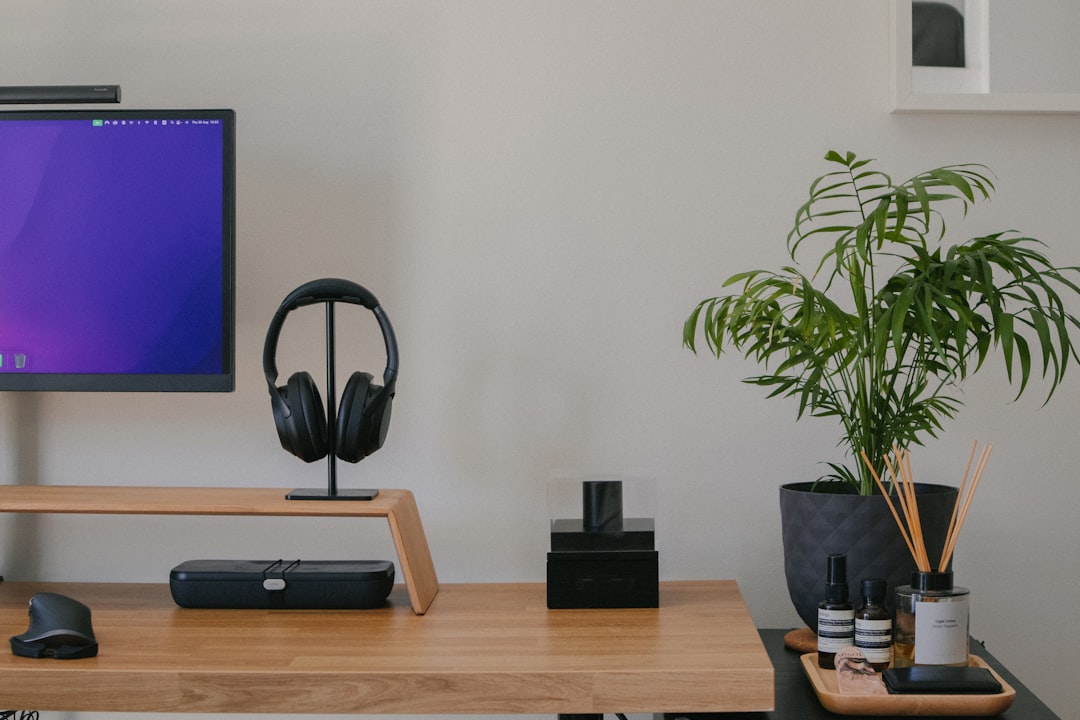
Photo by Nubelson Fernandes on Unsplash
The mid-sized soundbar category continues to be the go-to solution for renters, apartment dwellers, and homeowners who want better TV audio without a full home theater stack. This comparison examines four popular mid-size options available in 2024–2025: the Bose Smart Soundbar (the latest model), the Sonos Beam Gen 2, the JBL Bar 300, and the Sony HT-S2000. Each unit is evaluated as a self-contained system (no external subwoofer), focusing on design, connectivity, app experience, speaker layout, and real-world sound performance to help readers decide which one fits a bedroom, a small living room, or a compact media setup.
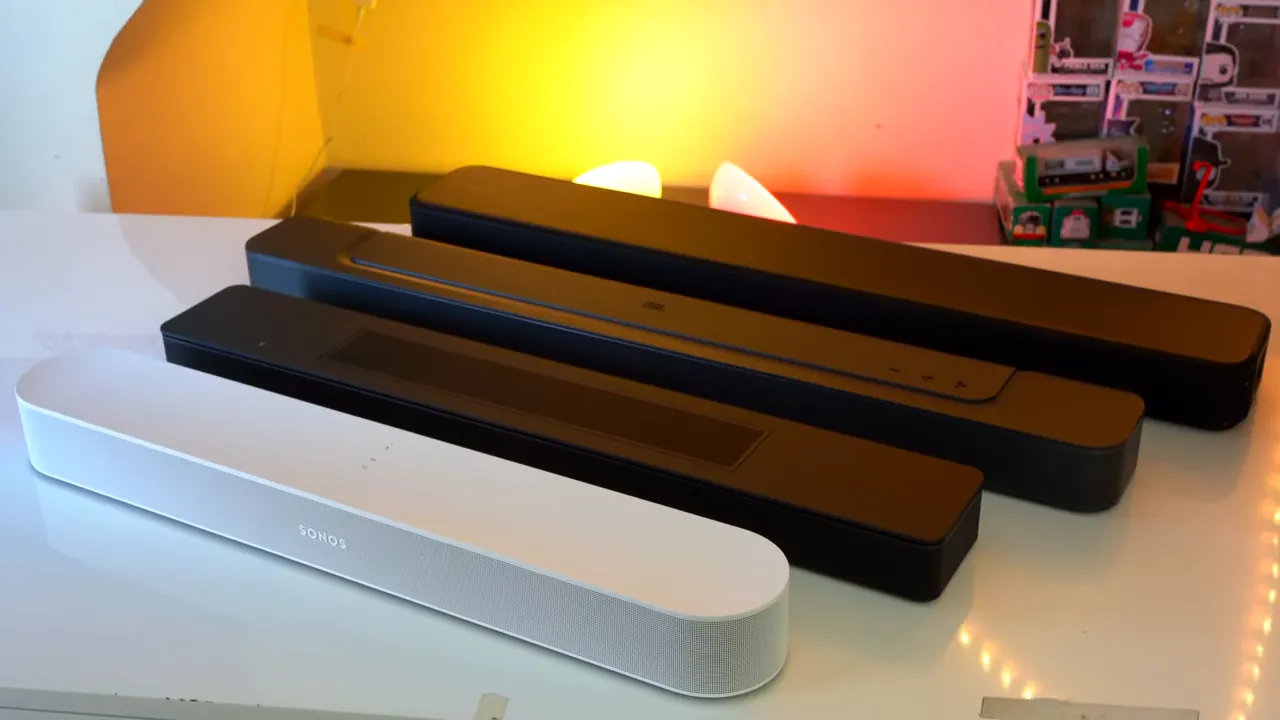
Mid-sized soundbars balance size, price, and sonic performance for many households that do not have space for a separate subwoofer and satellite speakers. These units produce their own bass through built-in drivers and passive radiators, which delivers more low-frequency impact than most built-in TV speakers. For users in apartments or rooms with limited layout flexibility, a single soundbar provides a cleaner, less intrusive solution while still improving dialogue clarity and instrument separation. While a dedicated subwoofer will always deliver deeper, more cinematic low end, the convenience and footprint advantages of a self-contained soundbar remain compelling for everyday viewing and music streaming.
All four soundbars in this comparison are relatively low profile and designed to blend into living spaces rather than dominate them. The JBL Bar 300 stands out as the most wall-mount friendly option because it includes a mounting kit in the box, whereas both the Sonos Beam Gen 2 and the Bose Smart Soundbar require separate purchases for wall hardware. The Sony HT-S2000 also ships with a wall-mounting kit but requires attention to the external power brick that comes with the unit, which may complicate neat cable routing. Small design details like these matter for installation planning, especially when concealment and aesthetics are priorities.
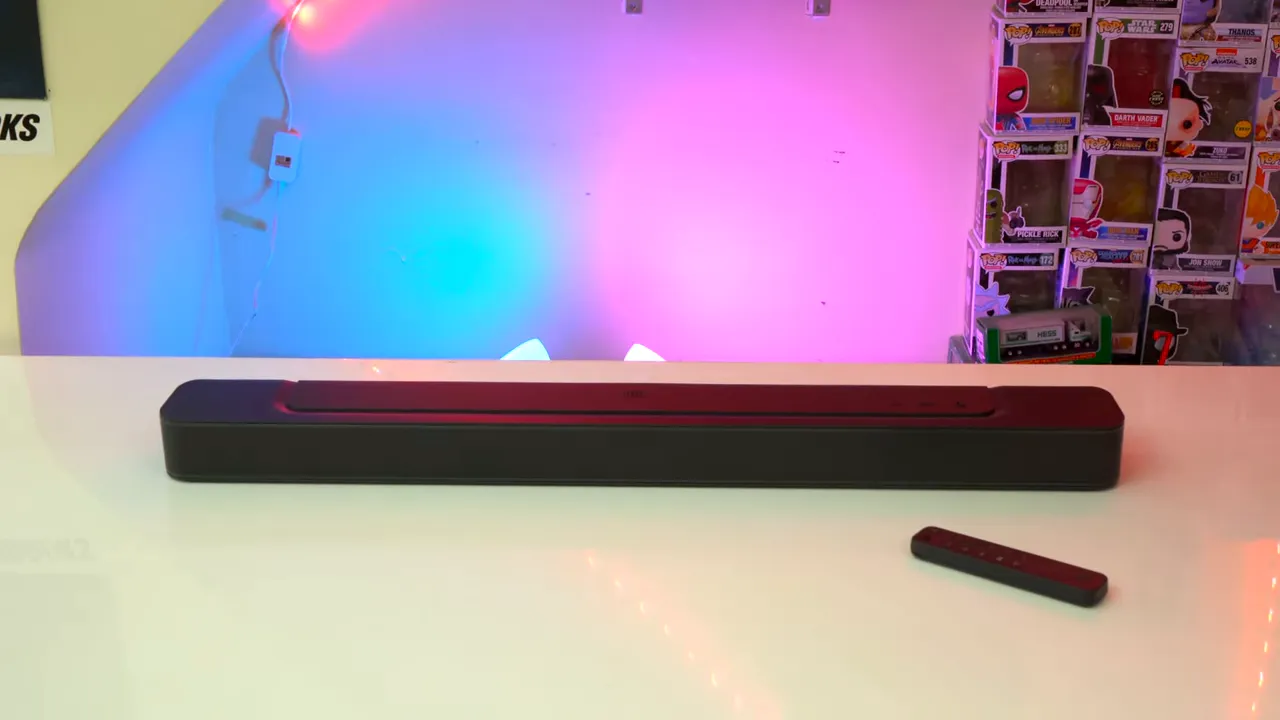
In this price bracket, a single HDMI eARC/ARC port is the norm and the Sonos, Bose, and Sony models follow that standard. The JBL Bar 300 is different in offering an HDMI input in addition to HDMI ARC/eARC, allowing direct connection of a game console or Blu-ray player without routing everything through the TV. Ethernet on the JBL is a welcome extra for stable network streaming, though wired networking is less critical for many casual users than HDMI I/O options. All four soundbars provide Bluetooth and Wi‑Fi, but AirPlay 2 and Chromecast are supported by Bose, Sonos, and JBL, while the Sony S2000 lacks native AirPlay/Chromecast support and relies on the TV’s streaming capabilities instead.
The mobile and TV-side control experience varies noticeably. The Sony, Bose, and JBL companion apps present straightforward, well-organized interfaces for quick EQ tweaks and device setup, while the Sonos app feels more crowded and can complicate fast sound adjustments. A notable convenience for Sony owners is the ability to change soundbar settings directly from compatible Sony TVs, simplifying setup and tuning without switching devices. First-party integration should be a consideration: brand-matched TV and soundbar pairings often unlock features like unified audio controls and advanced sync behaviors.
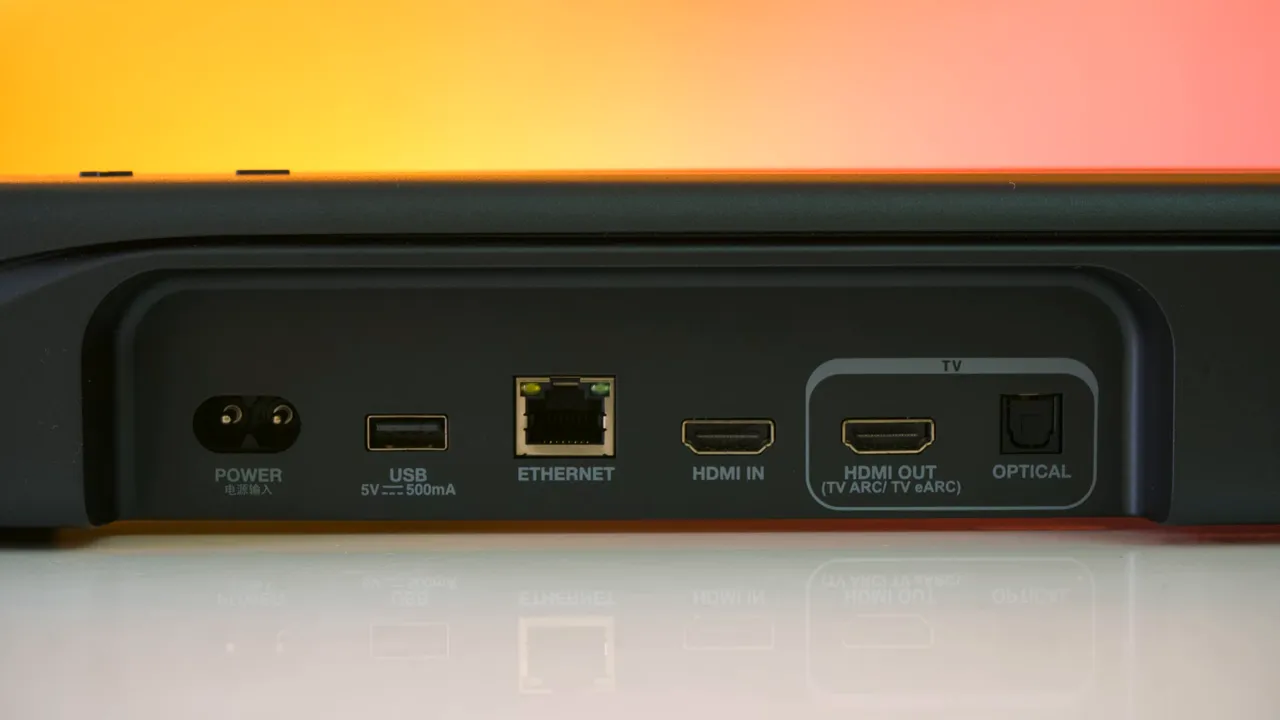
Driver configuration strongly influences perceived width, depth, and immersion. The JBL Bar 300 concentrates four front-firing drivers in the center, includes dual side-firing tweeters, and a rear-firing exhaust port, which results in a more focused but less wide soundstage. The Sony S2000 uses three front drivers plus dual front-mounted subwoofers with side-firing exhausts for extra low-end punch. The Sonos Beam Gen 2 has four drivers with side-firing elements and a front tweeter, supported by multiple passive radiators for improved bass extension.
The Bose Smart Soundbar is unique among these models by incorporating upward-firing drivers that enable true Dolby Atmos playback in a compact package. Those upward drivers contribute to a more open and immersive soundstage, providing a stronger sense of height and better instrument separation. For households prioritizing Atmos content in a smaller footprint, that upward firing implementation can be the deciding factor.
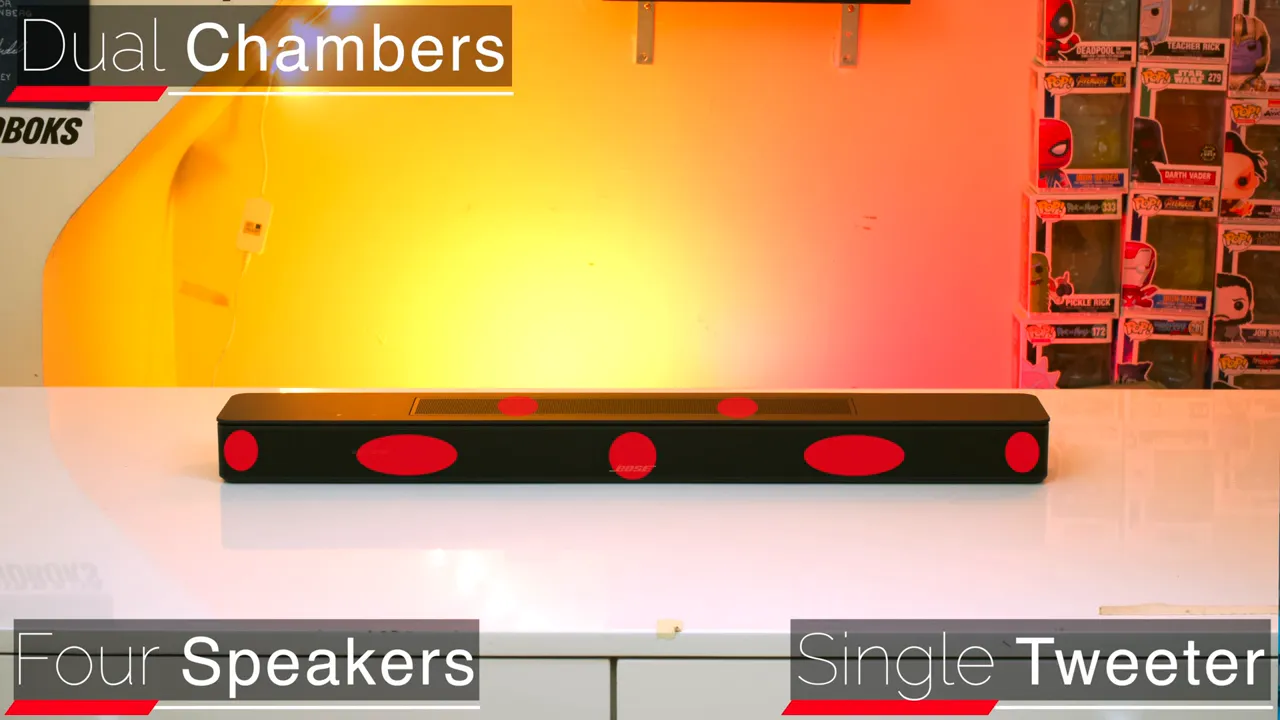
All units were evaluated for dialogue clarity, instrument separation, maximum usable volume, and bass character when used alone (no external subwoofer or satellites). The Sony S2000 emerged as the loudest option with the most physical bass kick, making it the best choice where maximum volume and impactful low end are required in a mid-sized enclosure. The Sonos Beam Gen 2 improved on its predecessor by achieving louder output and deeper bass, while keeping a strong center channel presence thanks to the front-firing tweeter.
The JBL Bar 300 performs adequately for general viewing and casual music but delivers the weakest instrument separation and the lowest maximum volume among the group. Its driver cluster in the center reduces stereo width and perceptible physicality. Conversely, the Bose Smart Soundbar delivers the most open and realistic presentation thanks to its upward-firing drivers and careful voicing. While the Sony produces more overall energy, the Bose tends to produce better spatial placement and a more immersive listening experience at comparable volume settings.
When selecting a mid-sized soundbar, three practical factors often outweigh pure specifications: room size, content habits, and integration with existing devices. For small to medium rooms where immersive Atmos content is a priority, an upward-firing design will make movies and select streaming shows feel larger than life. For louder shared spaces or parties, a model with greater maximum volume and stronger bass (like the Sony S2000) will provide more satisfying performance without adding a separate subwoofer. If wall mounting and cable management are critical, buying a model that includes a mounting kit or that has flexible I/O options will reduce installation headaches.
Additional upgrades remain possible with most of these soundbars (external subs and satellite speakers), so selecting a base model that supports expansion will allow a modest system to grow into a fuller surround setup over time. Budget and preferred streaming services also influence choice: AirPlay 2 and Chromecast compatibility simplifies multi-room music from mobile devices, while first-party TV integration can streamline daily adjustment and calibration.
Yes, the Bose Smart Soundbar includes upward-firing drivers that enable true Dolby Atmos playback in a compact enclosure. Those drivers create height cues and contribute to a more open soundstage, making object-based Atmos content feel more immersive compared with purely horizontal driver arrays. While room acoustics and ceiling reflectivity affect Atmos performance, the inclusion of upward-firing elements provides a noticeable improvement in spatial cues over non‑Atmos models in the same price tier. For viewers who prioritize immersive movie sound without a multi-speaker rig, the Bose implementation is a strong selling point.
An external subwoofer is not strictly necessary because all four soundbars deliver usable bass without one, thanks to built-in drivers and passive radiators. However, a dedicated subwoofer will always deepen low-frequency extension, add slam for action scenes, and relieve the main soundbar drivers from reproducing the heaviest bass content. For small rooms and apartments where neighbor disturbance is a concern, relying on the integrated bass may be preferable, but for a more cinematic, theater-like experience an add-on sub is recommended when space and building rules permit.
>Bose, Sonos, and JBL models include AirPlay 2 and Chromecast support, making them easy to integrate into multi-room streaming systems and to stream directly from mobile devices. The Sonos ecosystem also provides extensive multi-room features but its app can feel cluttered compared with others. The Sony S2000 lacks native AirPlay and Chromecast, relying on the TV as the streaming source, which still works for in-room playback but is less convenient for direct mobile streaming or synchronized whole-home audio. For homes that prioritize seamless wireless music streaming, models with native AirPlay/Chromecast support will offer the most straightforward experience.
Yes. First-party pairings often unlock additional features such as on-TV soundbar controls, improved lip-sync or center-channel reinforcement, and branded sync technologies that combine TV speakers with the soundbar for a fuller center image. These integrations simplify setup and make daily adjustments more convenient. For example, a Sony TV used with a Sony soundbar can allow settings to be adjusted directly on the television interface, which is especially useful for those who prefer not to manage multiple apps. Buyers should weigh these integration benefits against the individual sonic and feature strengths of each soundbar model.
For mid-sized rooms and listeners seeking the most natural, immersive audio in a compact form, the Bose Smart Soundbar is the best-rounded choice due to upward-firing drivers and strong instrument separation. For maximum loudness and bass performance without adding a subwoofer, the Sony HT-S2000 delivers the most headroom. The Sonos Beam Gen 2 offers a balanced, ecosystem-friendly option with improved output over the previous generation, while the JBL Bar 300 makes sense for those who need wall-mount convenience or an extra HDMI input. Readers shopping for a single, mid-sized soundbar should match priorities—immersion, loudness, streaming ease, or installation simplicity—to the model that best meets those needs, and consider expansion options for future upgrades.
Discover more ways to enhance your Utah home

Permanent outdoor LED puck lights are transforming how homeowners approach seasonal lighting, architectural accenting, and year-round curb appeal.

In-depth comparison of eight battery lawn mowers—prices, runtime, deck build, noise levels, and our top picks for value, performance, and best overall.
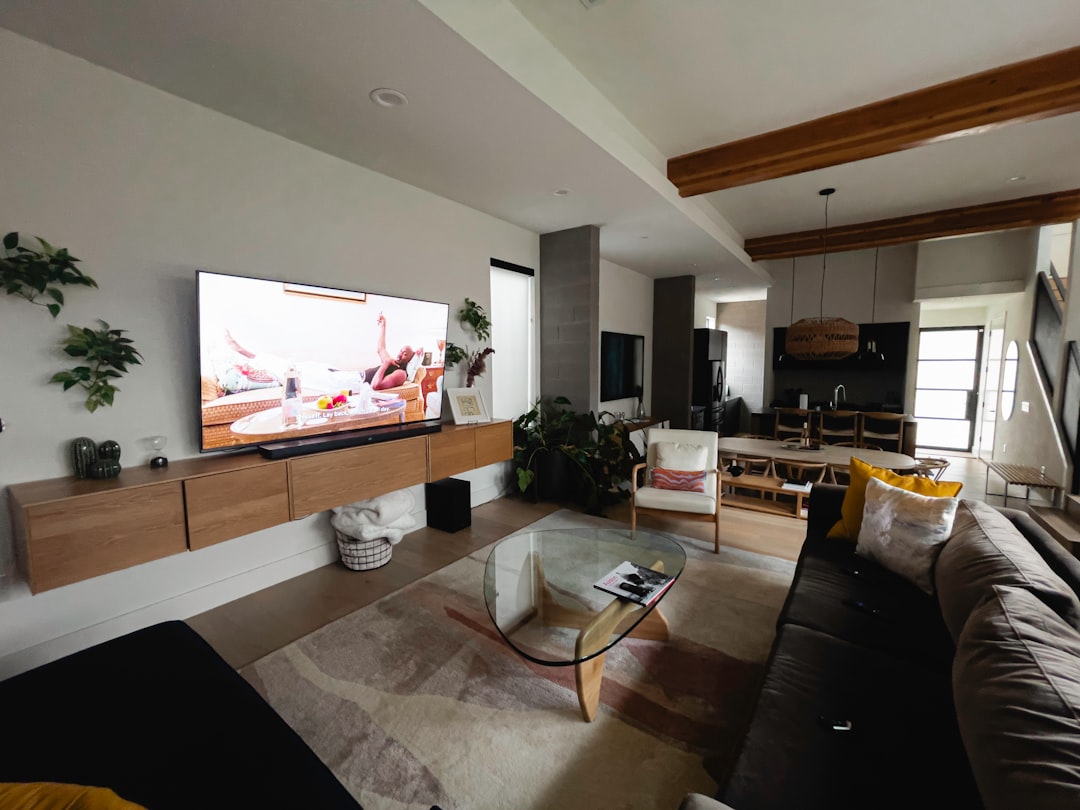
Head-to-head comparison of 2025's top OLEDs—LG G5, Samsung S95F, Sony BRAVIA 8 II. Find the best pick for bright rooms, gaming, HDR performance and reflection handling.
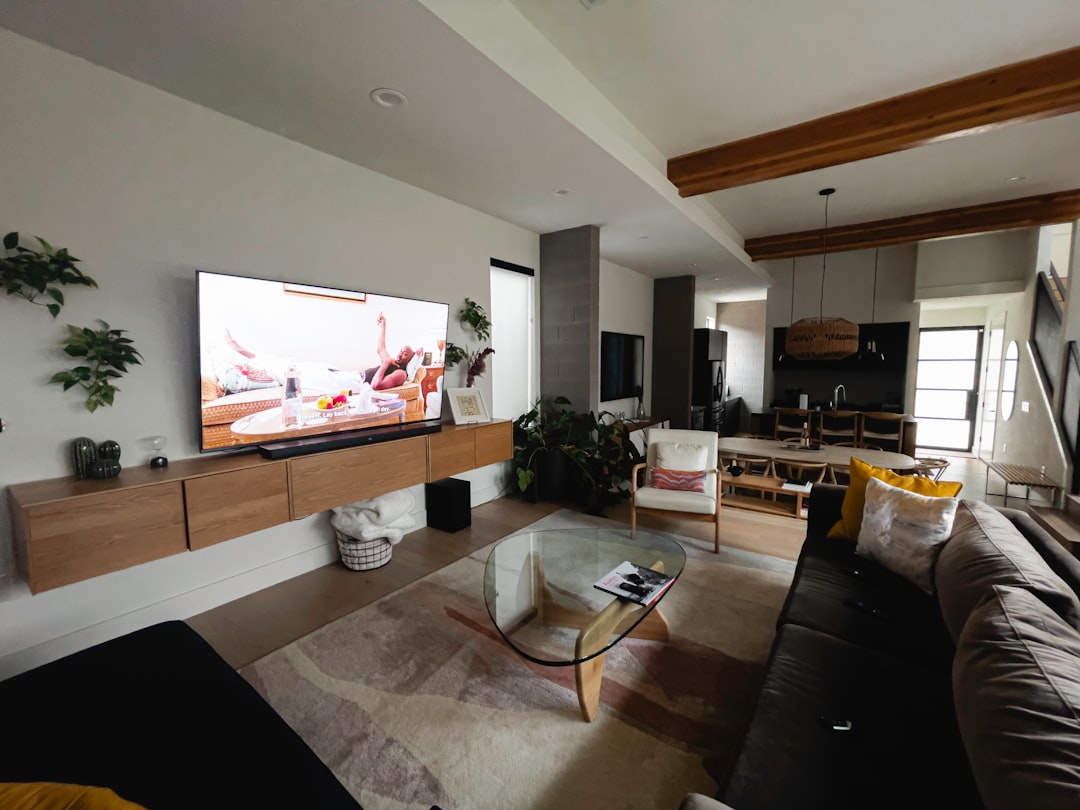
Choosing the right soundbar can transform a living room into a cinematic center without the complexity of a full AV receiver. In 2026, major brands such as Sony, Bose, Samsung, Sonos, JBL, and LG continue to push audio performance, immersive Atmos implementations, and smart features.
Access all your saved properties, searches, notes and more.
Access all your saved properties, searches, notes and more.
Enter your email address and we will send you a link to change your password.
"Thank you! A licensed agent will be reaching out to you shortly."
I agree to receive marketing and customer service calls and text messages from Best Utah Real Estate. Consent is not a condition of purchase. Msg/data rates may apply. Msg frequency varies. Reply STOP to unsubscribe. Privacy Policy & Terms of Service.
